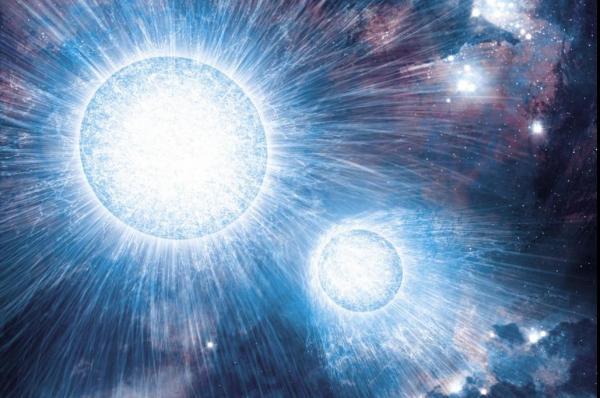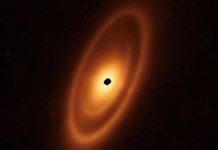MOSCOW, Feb. 17 (UPI) — New analysis by Russian astronomer Maxim Pshirkov confirms intimate binary star systems with strong colliding stellar winds as a unique source of intense gamma radiation.
Binary systems with Wolf-Rayet stars and massive OB companions generate strong stellar winds. New data from the Fermi Gamma-ray Space Telescope suggests when these stellar pairs orbit in close proximity to each other, their stellar wind collisions can generate photonic energies in excess of 100 mega electronvolts, MeV.
The phenomenon was first observed as early as 1834 in the binary star sytem Eta Carinae, a pair of stars 8,000 light-years from Earth. But a single example wasn’t sufficient to prove this type of binary system as a consistent source of gamma radiation.
“Recent calculations proved such star types as Eta Carinae to be incredibly rare — probably, one per a galaxy like we inhabit, or less,” said Pshirkov, a researcher with the Sternberg Astronomical Institute at the Lomonosov Moscow State University.
To find additional examples of Eta Carinae-like systems, Pshirkov looked to an American-Austrian survey that identified seven stellar systems featuring Wolf-Rayet stars. But the research lacked observations on intense gamma radiation. Pshirkov re-examined the seven systems using Fermi-LAT observations.
“As the result — it was discovered that Gamma Velorum is the source of gamma-radiation,” Pshirkov said.
The smaller of the two stars in Gamma Velorum boasts a mass 10 times that of the sun’s, while the larger measures 30 solar masses. The two massive stars are constantly shedding mass in the form of high-speed stellar winds, which collide and produce high-energy photon radiation.
Background radiation always threatens to obscure astronomical observations, but mathematical analysis suggests Gamma Velorum is the source of the intense gamma radiation with a confidence or probability of 99.99 percent.
The research was published this week in the Monthly Notices of the Royal Astronomical Society.







